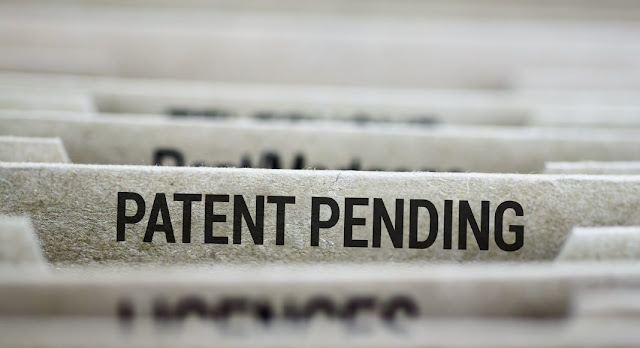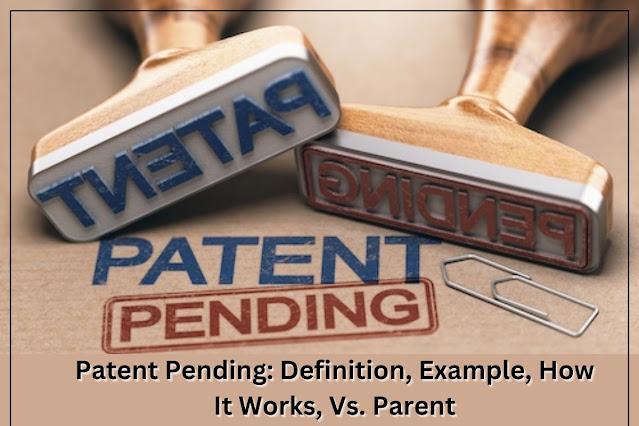Patent Pending: Exploring the Definition, Examples, How It Works, and the Distinction from Granted Patents"
In the fast-paced world of
innovation and technological advancement, protecting intellectual property has
become a critical aspect of business strategy. One common term you might come
across in this realm is "patent pending." But what exactly does it
mean, and why is it so significant? In this article, we'll delve into the
concept of "patent pending," its implications, and its importance in
the world of intellectual property. Now patenting your idea and marketing your
invention has become faster and effortless. Patent Services USA
provides reliable services to patent your Idea instantly. If you have an invention
then work with us to get patent your idea.
Defining Patent Pending:
"Patent pending" is a term used to indicate that an application for a
patent has been filed with a relevant patent office but has not yet been
granted or rejected. In essence, it signifies that the inventor or applicant is
seeking legal protection for their invention, but the process is still ongoing.
This status serves as a temporary placeholder, allowing inventors to stake
their claim while the patent office reviews the application.
The Process of Obtaining a
Patent: To better understand the significance of "patent
pending," it's essential to grasp the process of obtaining a patent. When
an inventor develops a new and innovative product, process, or design, they can
file a patent application with the appropriate government agency, such as the
United States Patent and Trademark Office (USPTO) in the U.S.
The patent application contains
detailed information about the invention, including its description, specifications,
drawings, and often a legal claim outlining the unique aspects that the
inventor believes are patentable. Once the application is filed, a lengthy
examination process ensues, during which patent examiners review the
application to determine if the invention meets the necessary criteria for
patent protection.
The Significance of
"Patent Pending": The term "patent pending" holds several key implications for inventors,
businesses, and the overall innovation ecosystem:
- Protection Against Copycats: While a patent is
pending, competitors are discouraged from copying the invention since they
are aware that the inventor is seeking legal protection. If they do
proceed to imitate the invention and the patent is later granted, the
patent holder could potentially take legal action against them for
infringement that occurred during the "patent pending" phase.
- Enhanced Negotiation Power: For businesses
seeking partnerships, funding, or licensing agreements, having a
"patent pending" status can strengthen their negotiating
position. Potential investors or partners may view the invention as
valuable and innovative, prompting them to engage in discussions more
seriously.
- Market Advantage: In industries driven by
rapid innovation, having a "patent pending" status can provide a
competitive edge. It showcases the company's commitment to research and
development and its dedication to bringing novel solutions to the market.
- Time Advantage: The patent application process
can be time-consuming, sometimes taking several years to complete. By
leveraging the "patent pending" status, inventors can establish
their priority over later-filed applications, safeguarding their right to
the invention even before the patent is officially granted.
- Marketing and Branding: Companies often use
the "patent pending" label in their marketing and branding
efforts. It communicates innovation, uniqueness, and a commitment to
solving specific problems within their industry.
Navigating the Patent Pending
Phase: While the "patent pending" status offers certain
protections and advantages, it's important to note that not all patent
applications result in a granted patent. During the examination process, patent
office’s assess the invention's novelty, non-obviousness, and usefulness. They
also search existing patents and published literature to determine if the
invention is truly unique.
To increase the chances of a
successful outcome, inventors and applicants can take several steps:
- Thorough Research: Before filing a patent
application, it's crucial to conduct a comprehensive search to ensure that
the invention hasn't been previously patented or described in existing
literature.
- Clear and Detailed Application: The patent
application should provide a clear and thorough description of the
invention, including its features, benefits, and potential applications.
Detailed drawings or diagrams can further clarify the innovation.
- Expertise: Seeking legal guidance from a
patent attorney or agent can significantly improve the quality of the
application. These professionals are well-versed in the intricacies of
patent law and can help navigate the complexities of the process.
- Patent Strategy: Developing a comprehensive
patent strategy that aligns with business goals can streamline the
application process and maximize the potential value of the granted
patent. Hire a patent company to continue
your patent procedure.
Conclusion: In the dynamic
landscape of innovation, "patent pending" serves as a beacon of
protection, potential, and progress. It encapsulates the journey from inventive
idea to legal recognition and represents the efforts of countless inventors
striving to make a mark in their respective fields. As businesses and
individuals continue to push the boundaries of what's possible, the concept of
"patent pending" remains a symbol of the innovation that drives our
world forward.


.jpg)

Comments
Post a Comment